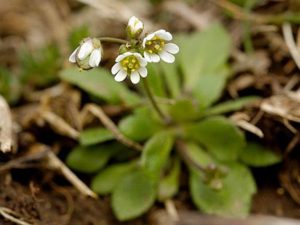Highlights:
Wet and cool weather has slowed spring field activity. This spring is more typical and most producers have not rushed to start planting. Corn planting started yesterday in some areas, but others are holding off. Growers that planted corn April 15 last year are less anxious to start early. Best yields came from the “typical” planting dates indicating that the cold snap in late April may have resulted in additional stress. Soil temp was 10.5 o at 2.5 inch depth (Apr 23).
Elgin, Norfolk, Haldimand Wentworth had (60 mm or 2.5 inches) of rain over the last 2 weeks. Some area in Niagara had less and are relatively dry. In Oxford /Norfolk dark, organic soils are not drying out.
Wheat (Cereals): Most of the rye has nitrogen applied and has had excellent growth over past two weeks. Overall, the winter wheat crop looks good. In Norfolk about 40-50% has been fertilized, much of it applied in the last 2 days with both 28% and urea as the nitrogen source. Much of the N is on in Niagara; some has been applied in Oxford and Haldimand. On clay soils it is still early if full N is going on in the one application. Cold temperatures, wet soils and lack of growth result in too high a risk of loss. N that was applied ahead of April rain will have lost up to 40% in the ponded areas. Early seeded red clover cover crops are at cotyledon stage.
Forages: Last year’s new seedings look excellent. Growers are aware of lower production from older stands and are establishing more fields of new seeding than in recent years – a lot of direct seeding however, forages such as cereal-pea mixes are popular for extra cut they provide. Established older alfalfa stands look rough although observed heaving is minimal. Fields that had a late cut harvested for winter feed are showing significant damage, likely due to stress from extra cut or cutting during the critical time last year. Courses of action include thickening the stand by no-tilling red clover or a forage cereal mix such as oat/ barley/ pea into the old stand to get a 1st cut and then renovate or plant to silage corn or sorghum/sudan grass. Forage rye has excellent growth, and will likely be cut in 3 weeks, followed with manure application and then planted to corn.
There is need to get manure out in many areas. Opportunities to date have been limited and storages are full. There seems to be more awareness about surface runoff. March surface applied nutrients will not be in the same location they were applied. Severe water erosion this spring has shown the need for cover crops, residue cover, grassed waterways, reduced tillage etc. No till soybean stubble in many fields have significant rills and gullies. No-till clay soils have less infiltration and more concentrated flow and more erosion.
Tobacco acreage will increase again this year – up from 20,000 acres last year due to a strong market in China. Sweet corn is being planted on plastic.
Crop Insurance Report: No wheat inspections in Norfolk to date. Province wide there were 750,000 acres of winter wheat insured. Wheat damage reports are at less than 1% compared to almost 10% last year by May 10th .
Damage reports to date for winter wheat:
- 200 acres — Oxford, Elgin, South Middlesex
- 320 acres – Grey, Bruce, Wellington, Waterloo
- 500 acres – North Middlesex, Perth, Huron, North Lambton
- 1400 acres – Chatham, Kent, South Lambton
- 1600+ acres – Niagara, Haldimand, Brant, Wentworth
- 2000 acres – east of Highway 400
Damage reports to date for 2012 alfalfa seedings: 10 acres
May 1 Crop Insurance Deadline
- coverage for production insurance on intended crop acres
- Winter wheat without the winter kill coverage insurance
- Risk Management Program coverage (Agri-Stability,Agri-Invest)
Weeds are up in wheat and in no-till fields – winter annuals, especially chickweed, yellow rocket, stinkweed, and shepherds purse. Common whitlow grass – pictured below- (a broadleaf weed that is sometimes confused for chickweed and is not overly competitive) is also present in some fields. Sprayers are starting application on wheat in some areas; in other areas spraying will likely begin next week. Pesticide application must be done using best practices that include awareness of pollinators. Www.beehealth.ca provides up-to date information on handling of insecticide-treated seed to protect bees.
Mark the date: Ontario is hosting the North American Manure Expo on August 21 at Arkell (near Guelph). A pre expo tour featuring pit agitation demonstrations will be held on August 20.

